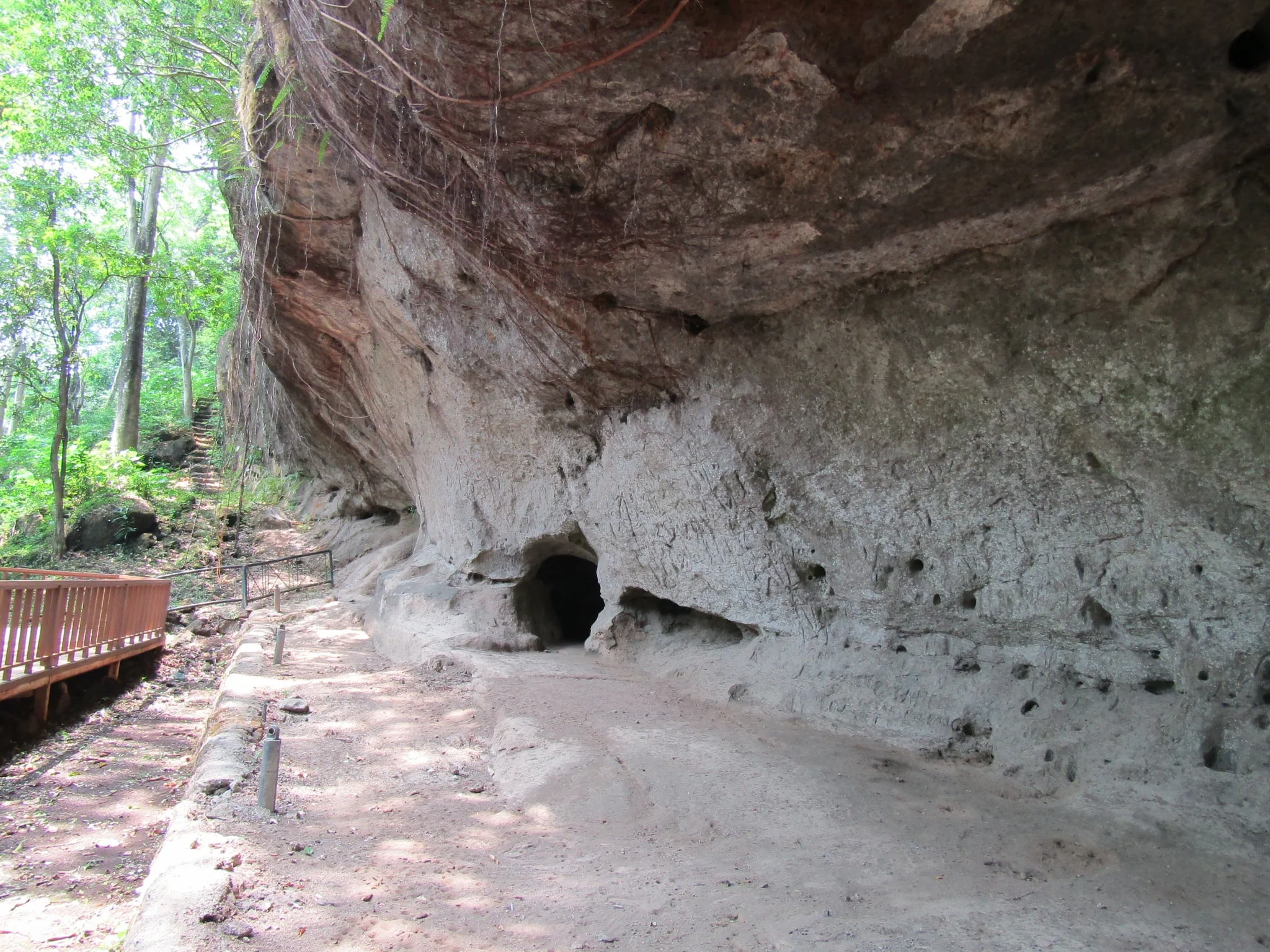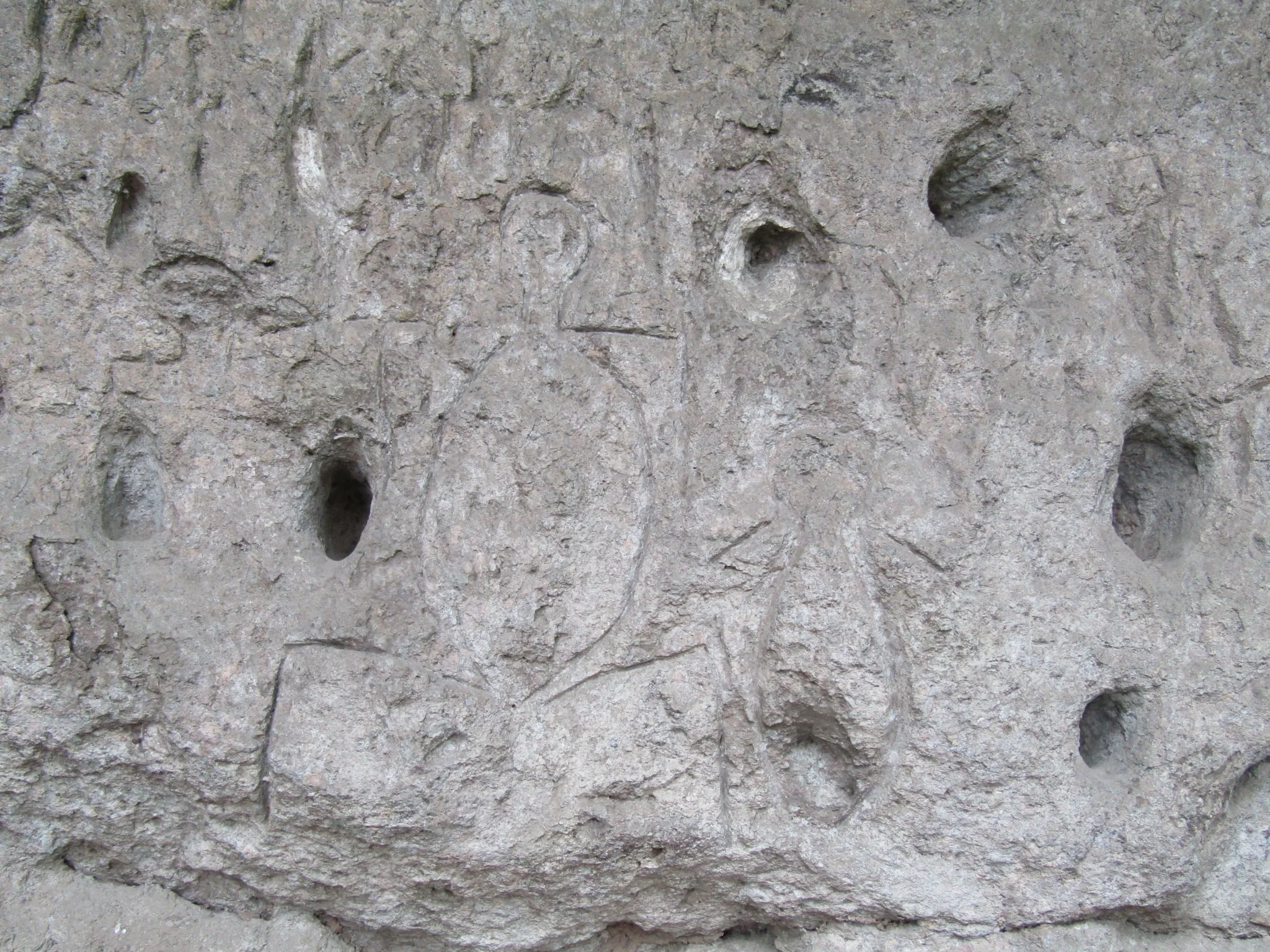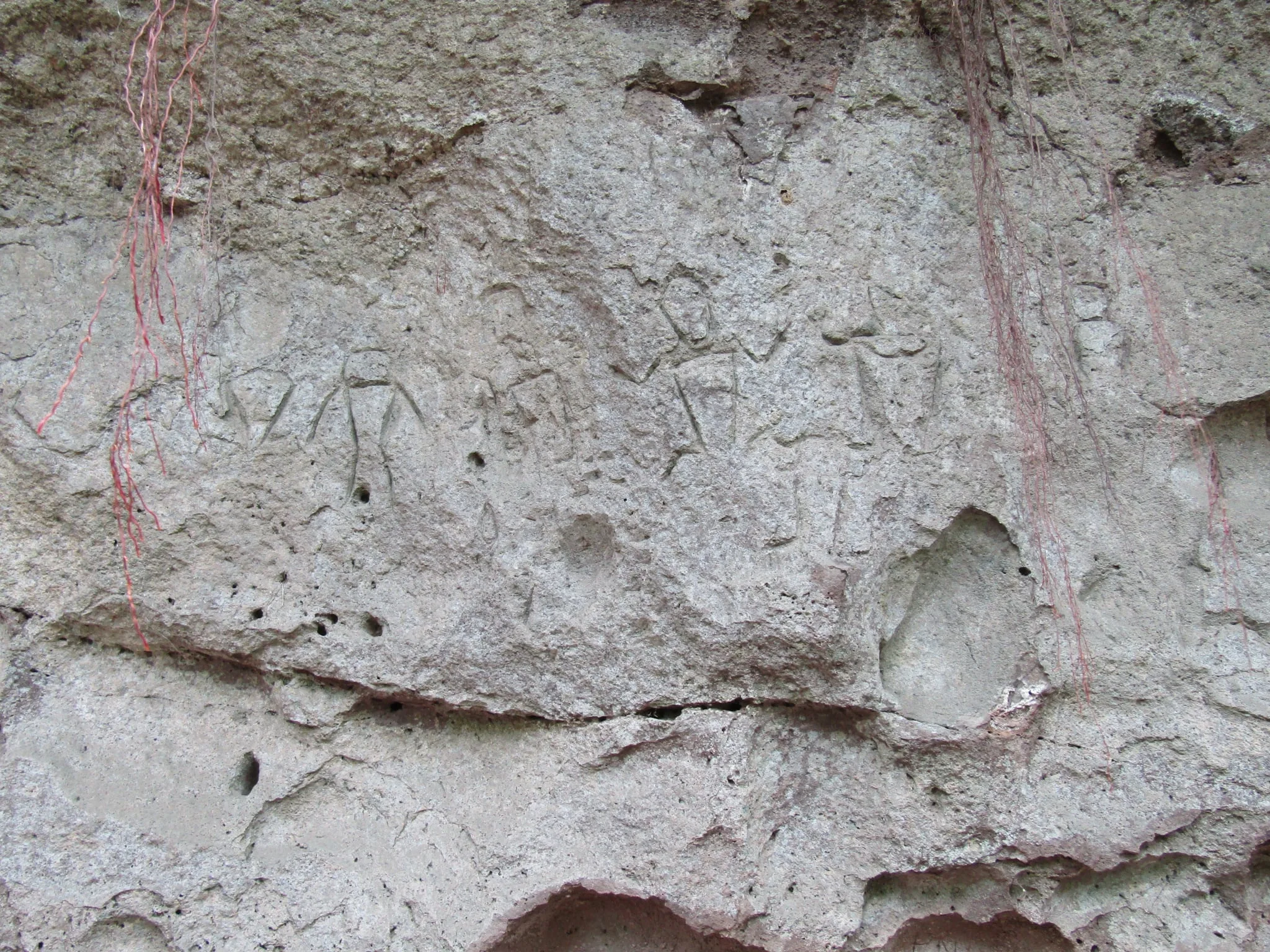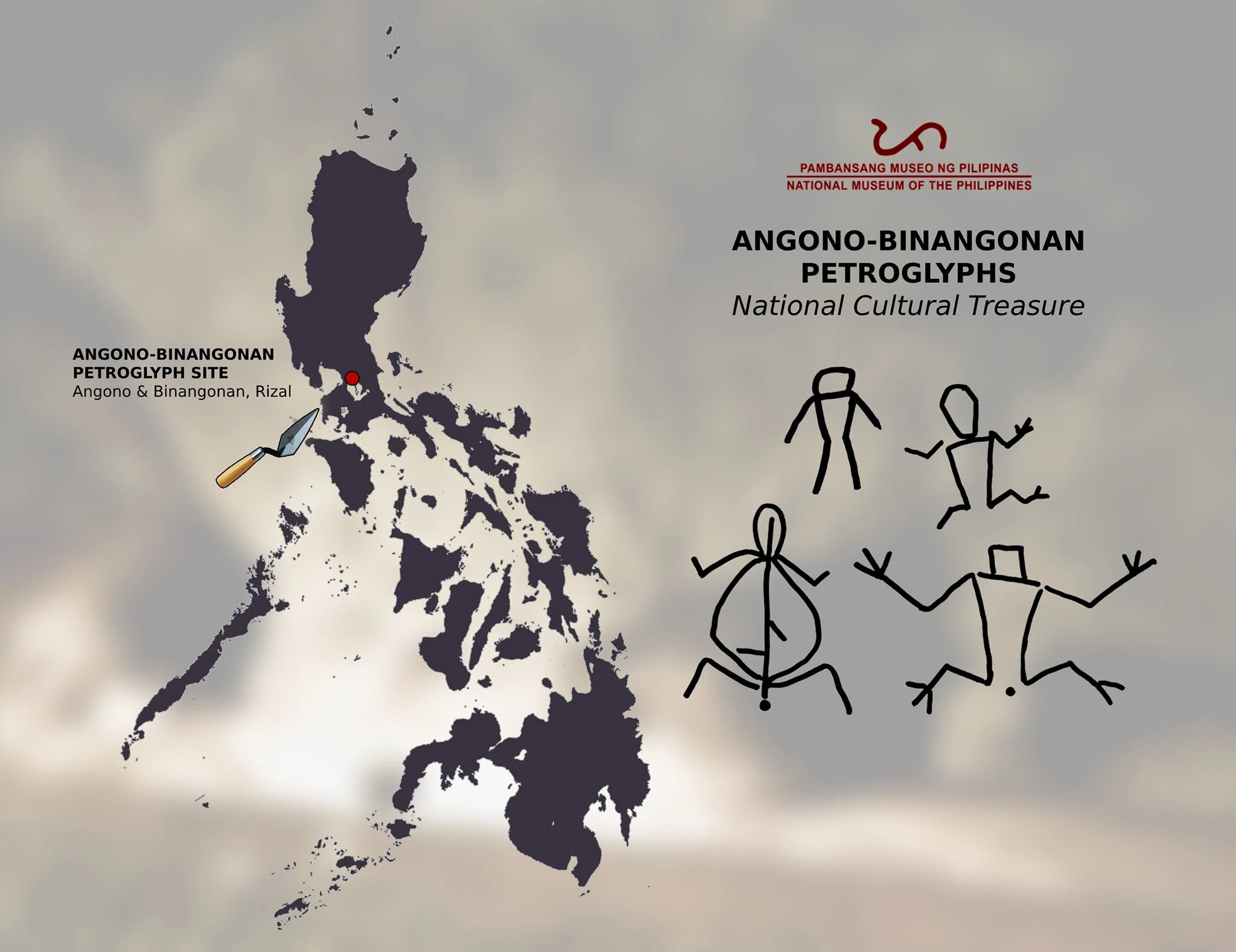The Angono-Binangonan Petroglyphs: Philippines’ Prehistoric Works of Art
The term “petroglyph” literally means rock carving. It comes from the Greek words "petra", meaning rock, and "glyphe", meaning to carve. The Angono-Binangonan Petroglyphs (formerly referred to as the Angono Petroglyphs) comprise of geometric and anthropomorphic (human form) figures engraved on the wall of a rockshelter. These are found at the border of the Municipalities of Angono and Binangonan in Rizal Province. Geologically, the petroglyphs were engraved on a volcanic ash deposit called the Guadalupe Tuff – fine-grained and brownish to buff in color.
Rock art is defined as human-made markings on surfaces of immovable rock, which serves as visual expression of those belonging to past cultures’ complex thoughts and beliefs. It is globally distributed and may be found in various forms like painting, drawing or engraving. In the Philippines, there are at least 20 reported rock art sites, foremost of which is found in Rizal Province.
In 1965, National Artist Carlos “Botong” Francisco reported to the National Museum of the Philippines (NMP) a set of unusual engravings he discovered on a rockshelter in Angono, Rizal. That same year, Professor Alfredo Evangelista, former Assistant Director of NMP, carried out the first archaeological undertaking at the site, yielding artifacts like ceramic sherds, obsidian flakes, chert flakes, charcoal, and a polished stone adze.
 |
| Part of the Angono-Binangonan Rockshelter, which may be seen from the NMP site museum's view deck. |
Twelve years after the first archaeological work on the petroglyphs, Dr. Jesus Peralta, former Chief of the Anthropology Division, recorded the petroglyphs and found a total of 127 distinct images that he described as human-like figures. However, he stated that there is no clear association between the petroglyphs and the artifacts found during the 1965 excavation.
Another archaeological excavation was conducted in 1998 by the NMP’s Mr. Angel Bautista and Dr. Victor Paz of the University of the Philippines-Archaeological Studies Program, in search of additional information about the petroglyphs, particularly in establishing the antiquity of the site. The results of their investigation were insufficient to achieve their objectives and further archaeological excavation was recommended.
 |
| Anthropomorphic figures engraved on the surface of Guadalupe tuff |
In 2016, Dr. Andrea Jalandoni of Griffith University, Australia visited the site and documented the petroglyphs using Geographic Information System (GIS) to create a three-dimensional model of the entire rock art. Aided by technology, 52 additional images were identified, increasing the previous count of 127 to a total of 179 images.
According to Dr. Jalandoni, the petroglyphs can be categorized into two phases: Phase I is older and composed mostly of geometric figures and “vulva” forms, and Phase II is more recent and predominantly composed of anthropomorphic figures. Some anthropomorphs are even complete with fingers, toes, head covering, and female genitalia.
 |
| A detailed view of the engraved figures. |
Moreover, her study concurred that it is still inconclusive whether the petroglyphs were engraved using stone tools or metal tools. While it can be imagined that metal tools were used, the Guadalupe Tuff has a low Mohs hardness scale (estimated to be between 1 and 3), that an incision can easily be made using either glass or stone tools.
Rock art research in the Philippines remains unpopular and there is little known published material on the topic. While there have been archaeological investigations done in the past, the association between the artifacts and the Angono-Binangonan rock art have yet to be established. Like most rock art elsewhere in the world, dating such sites remain a challenge.
There are many other interesting rock art scenes in the Philippines like the pictograms or charcoal drawings of at least 350 images of geometric forms, anthropomorphs and botanical emblems on the walls of some of the cave sites in Peñablanca, Cagayan; the petroglyphs in Alab, Bontoc, Mt. Province; the red hand stencils in Lamanok, Anda, Bohol; and the cave art in Singnapan Basin, Ransang, Palawan.
While further data needs to be established, these rock art sites may have potential implications for the Austronesian painting tradition, especially as the sites are considered part of the region with high co-occurrence with Austronesian speakers.
The Angono-Binangonan Petroglyphs was declared a National Cultural Treasure in 1973 for its uniqueness, and was included in the Philippines’ tentative list for nomination to the UNESCO World Heritage Sites List in 2006.
While the NMP’s Angono-Binangonan Petroglyphs Site Museum oversees the protection and interpretation of the site, its Archaeology Division is in charge of the conservation and research on the rock art. It is still closed to the public due to the pandemic but as soon as we open, our archaeologists will begin their systematic survey and more detailed study of the petroglyphs and its environs, helping us to piece together a more cohesive story and allow museum visitors to observe their activity.
Text and images by IB Cultura, and poster by TJ Vitales / NMP Archaeology Division
© National Museum of the Philippines (2021)




1 comment:
who is the artist?
Got Something to Say? Thoughts? Additional Information?